Key takeaways:
- Adaptive learning tools personalize education based on individual needs and progress, enhancing motivation and confidence.
- Dyslexia training is essential to empower individuals, improve self-esteem, and promote emotional resilience.
- Types of adaptive tools include speech-to-text applications, interactive software, and mobile apps that support learners in various environments.
- Implementing adaptive tools effectively requires understanding student needs, creating a comfortable environment, and providing regular feedback.
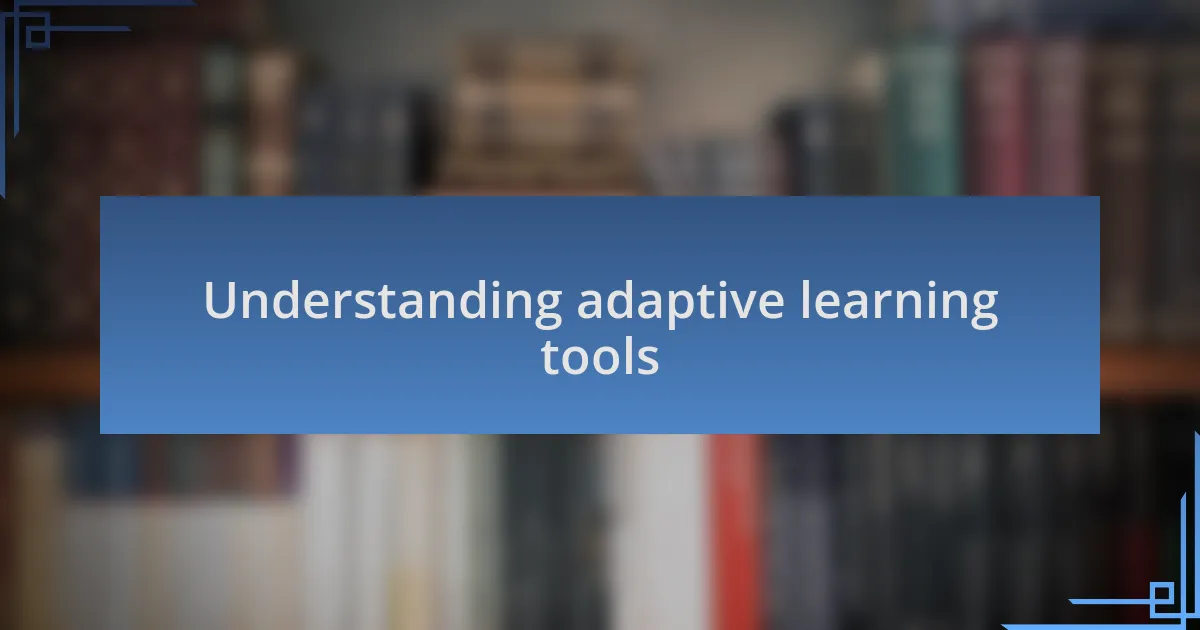
Understanding adaptive learning tools
Adaptive learning tools are designed to tailor educational experiences based on individual needs and learning paces. Imagine a tool that analyzes how you or a loved one interacts with reading materials, adjusting the difficulty level in real-time. I remember when I first observed this technology in action; the student I was working with blossomed as the software adapted to her unique learning rhythm, which was a heartwarming sight.
These tools often rely on sophisticated algorithms to assess performance and suggest personalized paths toward mastery. Think about it—how often have you felt overwhelmed by a one-size-fits-all approach in education? It’s frustrating. With adaptive learning, that frustration dissipates, as learners receive support specifically suited to their challenges. One time, I saw a child with dyslexia flourish when the program adjusted the font size and background color to reduce visual stress. It was like watching a light bulb turn on!
By continuously evaluating progress, adaptive learning tools help maintain motivation and build confidence. Have you ever stumbled while trying to comprehend a tricky concept, only to find resources that just didn’t connect? That’s where adaptive tools shine, making learning feel more like a tailored conversation than an uphill battle. I have seen firsthand how these insights can transform a daunting task into a journey of discovery.

Importance of dyslexia training
Dyslexia training is crucial because it empowers individuals with the tools and strategies they need to overcome their unique challenges. In my own experience, I have witnessed the profound effect that targeted training can have on a person’s self-esteem. When a student finally grasps a previously elusive concept, the joy and relief on their face tell me just how transformative this kind of support can be.
Without proper training, individuals may struggle with fundamental skills, leading to frustration and disengagement from learning altogether. I remember a particular case where a young girl was on the brink of giving up after countless setbacks. It was heartwarming to see her finally gain confidence through a structured training program that addressed her specific needs and encouraged her to embrace her strengths.
Moreover, dyslexia training fosters not just academic success but also promotes emotional resilience. I’ve spoken to many parents who express concern about their child’s future, fearing they might feel lost in a traditional classroom. With adequate training, I’ve seen these students evolve into advocates for themselves, demonstrating that dyslexia doesn’t define them—it’s just one aspect of their diverse learning journey.
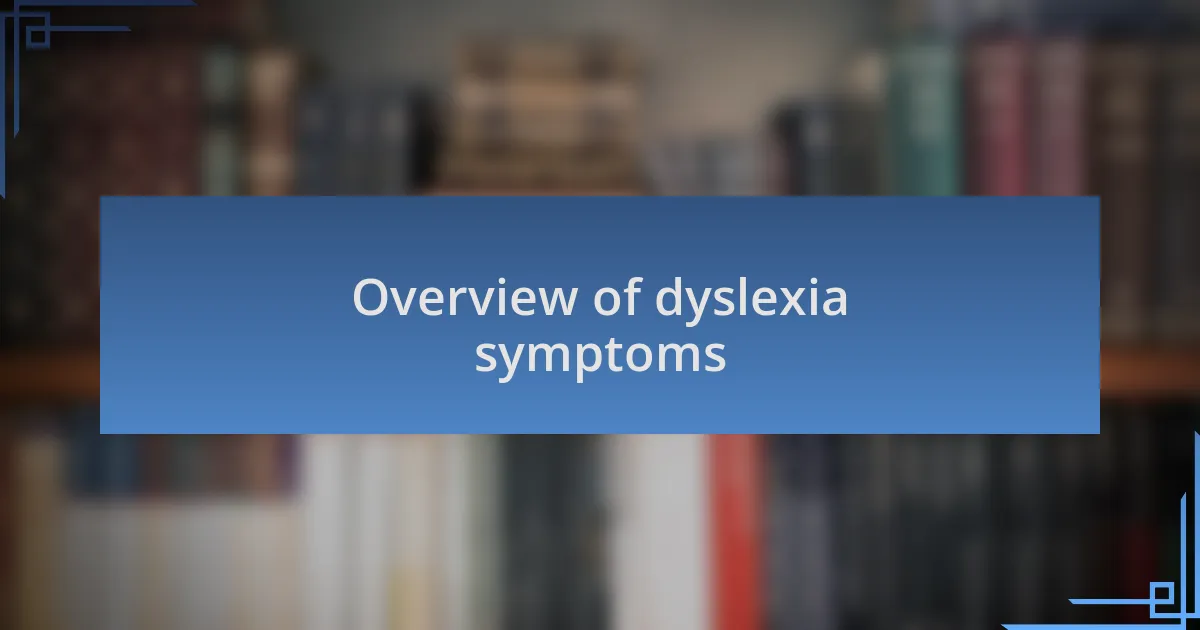
Overview of dyslexia symptoms
Dyslexia manifests through a range of symptoms that can vary widely from person to person. Common indicators include difficulties with reading fluency, where words may appear jumbled, making it challenging to understand texts. I recall helping a student who could decode words but struggled tremendously when it came to reading aloud in class; the frustration was palpable as she hesitated, fully aware of her potential yet unable to express it.
In addition to reading challenges, many individuals with dyslexia face issues with spelling and writing. One student I worked with had brilliant ideas but found it nearly impossible to translate them onto paper due to frequent spelling errors. It was a poignant reminder that dyslexia often affects more than just reading abilities—it sometimes dims the brilliance of creative expression and can lead to feelings of inadequacy.
Another common symptom is difficulty with time management and organization, which might not be as obvious. I remember a workshop where parents expressed their concerns about their children’s struggles to complete assignments on time, leaving them feeling overwhelmed. This aspect can be as discouraging as the reading challenges, fostering a cycle of anxiety that hinders learning. It’s crucial to recognize these varied symptoms, as they highlight the need for tailored support and understanding within educational environments.

Benefits of using adaptive tools
Adaptive learning tools offer a personalized approach that can significantly enhance the learning experience for individuals with dyslexia. I remember working with a student who utilized a tool that adjusted the font style and background color to suit her preferences. The moment she first read a passage without feeling overwhelmed was truly magical. Could any method feel more empowering than one that changes based on our unique needs?
Moreover, these tools often provide immediate feedback, which is essential for mastering new skills. I once observed a learner engage with an adaptive reading program that provided instant corrections and suggestions. Watching their confidence bloom with each successful attempt reminded me of the value of timely guidance; it helps learners understand their mistakes without the anxiety of judgment.
Lastly, the flexibility that adaptive tools provide can foster independence. I can think of one instance where a teenager took the initiative to explore a writing app on her own. She embraced features that helped organize her thoughts and structure her writing, transforming frustration into a sense of control. Isn’t it incredible to witness someone finding their own path through a tool designed just for them?
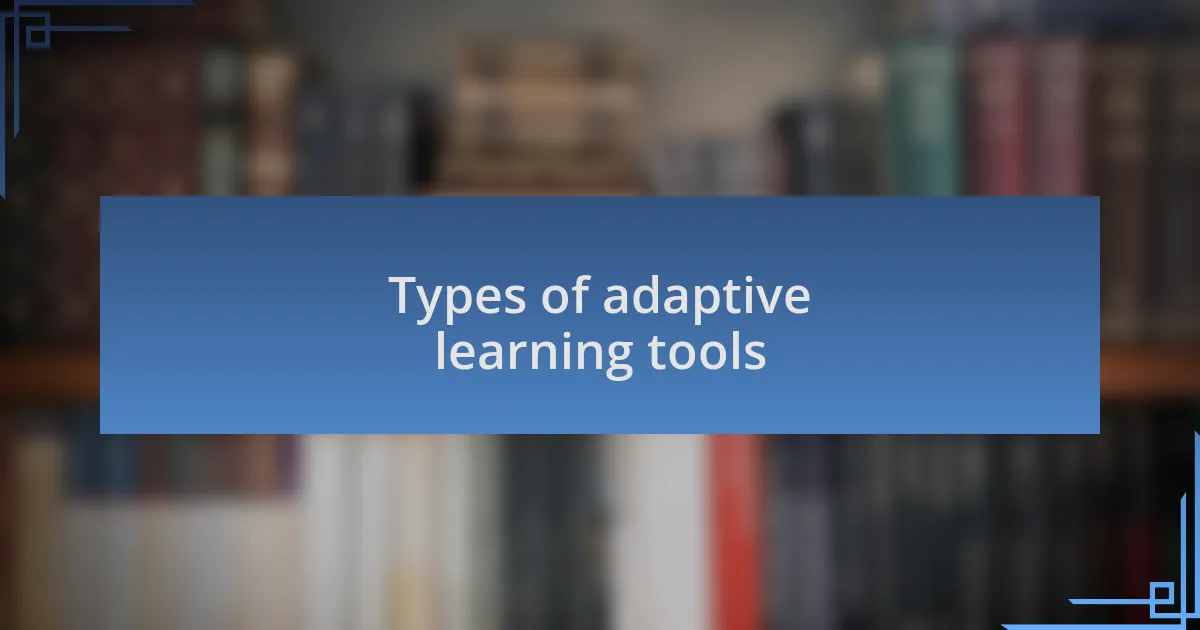
Types of adaptive learning tools
When exploring adaptive learning tools, we can categorize them into several types, each tailored to address specific challenges faced by learners. For instance, I once utilized a speech-to-text tool designed for students with dyslexia. The relief I saw on their face as they effortlessly spoke their thoughts into the device reminded me of how much language barriers can impede creativity. Does anyone really want to feel silenced simply because reading and writing pose challenges?
Another category worth noting is the use of interactive software that adapts its difficulty based on the learner’s progress. I had the opportunity to observe a student engaging with a math program that increased its complexity only after she mastered previous levels. The look of determination in her eyes as she tackled each new challenge was inspiring, showing how adaptive tools can celebrate small victories along the way.
Finally, we have mobile apps that offer on-the-go support, catering to today’s fast-paced world. I remember a parent sharing how her child would often practice using a vocabulary app during car rides. The convenience of learning anywhere, coupled with the app’s ability to track progress, fostered a habit of continuous improvement. How empowering is it for a young learner to have the autonomy to practice whenever they feel ready?
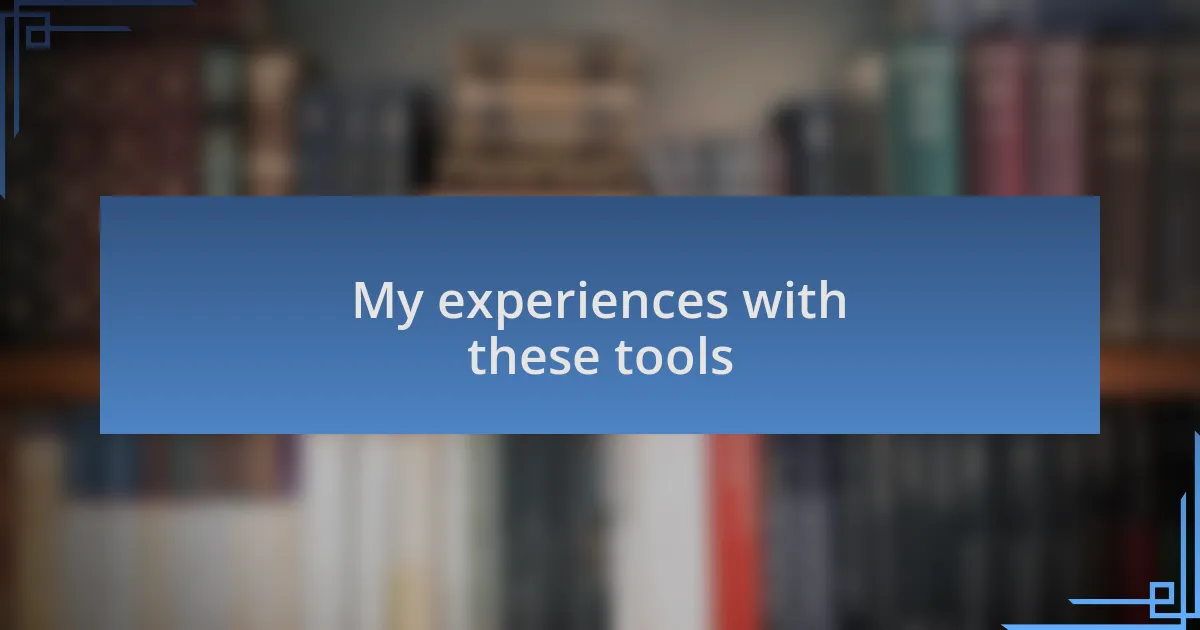
My experiences with these tools
Using adaptive learning tools has truly reshaped my perspective on educating students with dyslexia. I vividly recall working with a student named Alex who struggled immensely with reading. Introducing him to a sound recognition tool, I watched as he connected letters to sounds in a way he hadn’t before. It was astonishing to see the joy light up his face as he decoded words that had once seemed so daunting. Isn’t it incredible how the right tool can unlock a world of possibilities?
I also had the chance to use a platform that provided personalized lesson plans based on students’ responses. The first time I saw Lily interact with it, I was amazed at how she engaged in tasks that were previously overwhelming for her. The adaptive nature of the tool allowed her to work at her own pace, gradually building her confidence. I often think about how vital it is for learners to have that sense of ownership in their education. Who knew that such a simple approach could lead to profound changes in a student’s motivation?
Lastly, I experimented with a tool that incorporated gamification elements, which made learning feel more like play than a chore. Watching James tackle challenges and earn rewards was enlightening; he became more invested in his progress than I had ever seen before. It raised a question for me: How can we harness the power of games to evoke real joy in learning? This experience truly made me believe that when fun is integrated into education, barriers can fade away.
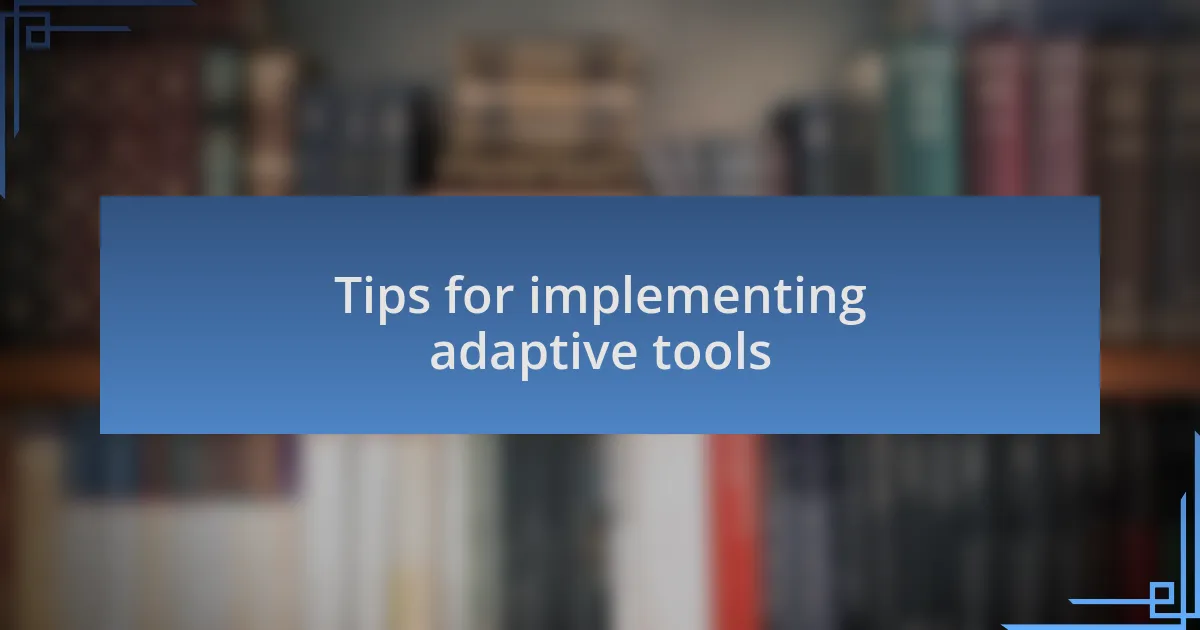
Tips for implementing adaptive tools
When implementing adaptive tools, start with a clear understanding of each student’s unique needs. For instance, I once tailored a tool for a student who had trouble with spelling. By personalizing the difficulty level and focusing on words relevant to her interests, I witnessed a remarkable improvement. How often do we overlook the power of relevance in learning?
Creating a comfortable learning environment is essential. I remember a session where a student was initially hesitant to use a new reading app. Once I allowed him to explore it in a low-pressure setting, he quickly discovered the features that resonated with him. Isn’t it amazing how a relaxed atmosphere can encourage exploration and discovery?
Lastly, regular feedback is crucial for progress. After each session using an adaptive tool, I made it a point to discuss what my students enjoyed and what frustrated them. This open dialogue not only helped refine our approach but also empowered them to take charge of their learning journey. Doesn’t it feel great to know you’re part of shaping their educational experience?